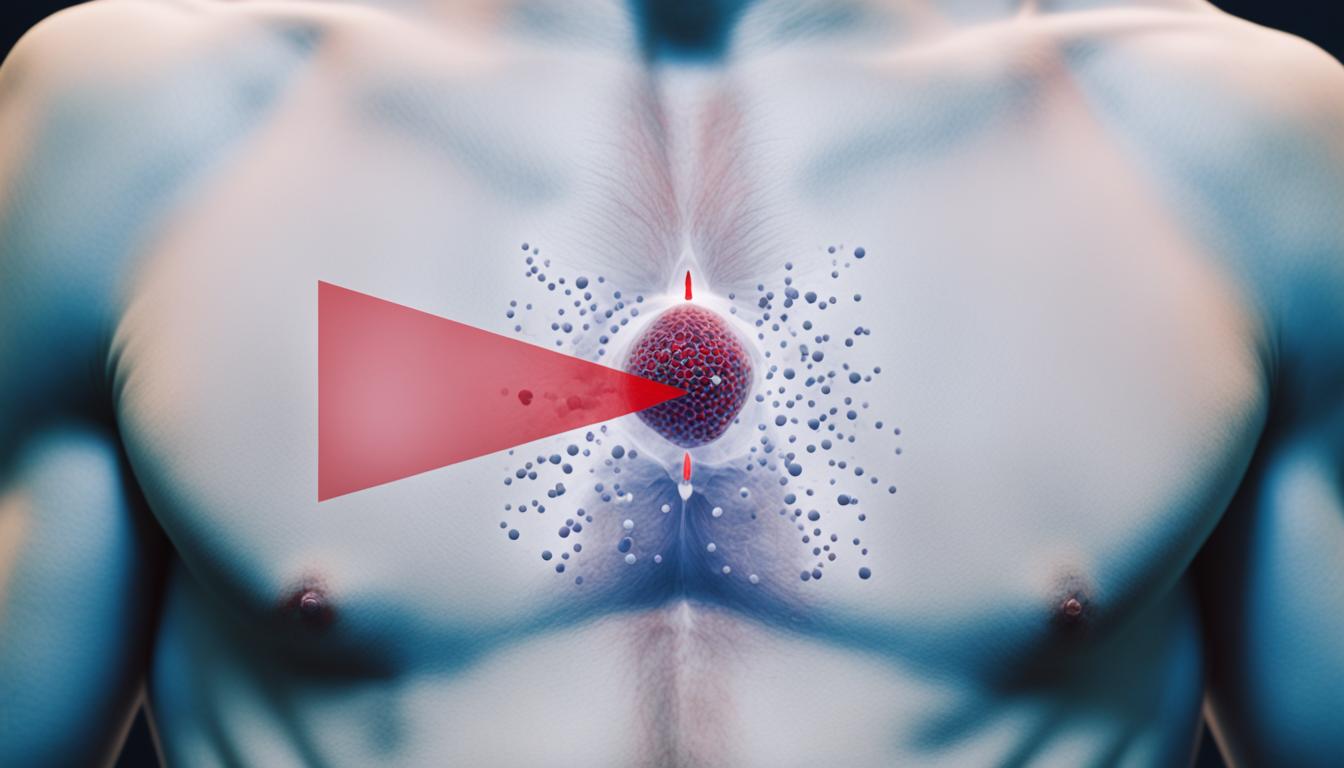Male breast cancer is rare but can greatly affect men. Even though men have less breast tissue than women, they can get breast cancer. The chance of a man getting this type of cancer is about 1 in 1,000 in their lifetime. Knowing the signs, risks, and how it can be treated is vital.
Key Takeaways:
- Male breast cancer is a rare disease that can affect men.
- Men have less breast tissue but are still at risk of developing breast cancer.
- Understanding the symptoms and risk factors is crucial for early detection and diagnosis.
- Treatment options for male breast cancer include surgery, radiation therapy, chemotherapy, hormone therapy, and targeted therapy.
- Stem cell therapy may also be explored as a potential treatment approach.
Early Detection and Diagnosis of Male Breast Cancer
Early detection is key to successfully treating male breast cancer. Men, though rarely afflicted, should know the signs. Regular self-exams help in finding unusual lumps or tissue changes.
Self-exams can be easily done at home. Here’s how:
- Stand in front of a mirror to check both breasts for any unusual changes.
- Gently feel your breast tissue with the other hand in small circular motions. Note any lumps or thickening.
- Inspect your nipples for any changes like retraction or discharge.
- Repeat the process lying down to examine your breasts thoroughly.
If you notice anything abnormal, see a doctor right away. An early diagnosis leads to more successful treatments.
Men should also get regular medical screenings for breast cancer. These may include mammograms, ultrasounds, or MRIs.
If cancer is suspected, a biopsy can provide a definitive diagnosis. This involves taking a small sample of breast tissue for testing.
Early detection and diagnosis are vital for a good prognosis. By taking charge of your health with self-exams and prompt medical care, you can improve your treatment’s success.
| Screening Methods | Advantages | Limitations |
|---|---|---|
| Mammography | – Effective at detecting small abnormalities – Widely available and commonly used |
– Some discomfort during the procedure – Radiation exposure |
| Ultrasound | – Non-invasive and painless – No radiation exposure |
– Less effective in detecting small abnormalities compared to mammography |
| Magnetic Resonance Imaging (MRI) | – Can provide detailed images of breast tissue – Suitable for high-risk individuals |
– Expensive – Not recommended as a routine screening method |
| Biopsy | – Definitive method for diagnosing male breast cancer – Provides detailed information on tumor characteristics |
– Invasive procedure – Potential risks such as bleeding or infection |
Treatment Options and Support for Male Breast Cancer
Men and women face similar choices when treating breast cancer. Surgery is the main approach. Most men get a mastectomy which removes the whole breast. Yet, some might have part of the breast removed, known as breast-conserving surgery.
After surgery, radiation therapy is often used. This helps kill any cancer cells that might remain. It also lowers the chances of the cancer coming back. Chemotherapy is another option. It’s more common for aggressive cancers or when cancer has spread.
Hormone therapy includes drugs like tamoxifen. Doctors use it for cancers that react to hormones. Another method, targeted therapy, uses drugs like trastuzumab. This is for a certain type of breast cancer that shows the HER2 protein.
Support is very important for men fighting breast cancer. This includes help from support groups, counseling, and special organizations. These offer emotional help and useful information. Remember, many are ready to support you through this journey.

